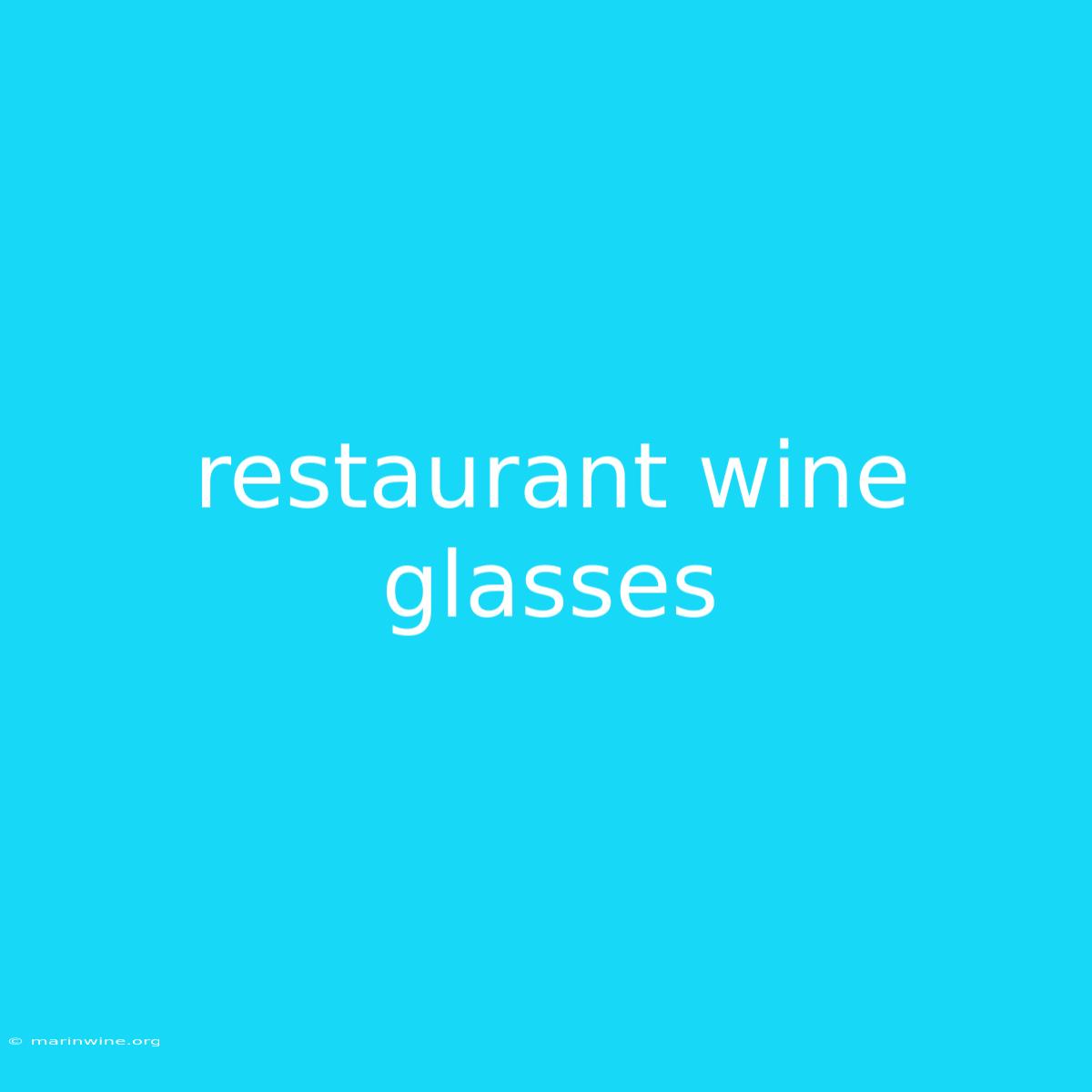The Art of the Pour: Unveiling the World of Restaurant Wine Glasses
Have you ever wondered why restaurants use such a variety of wine glasses? It's more than just aesthetics; it's about enhancing the wine drinking experience and showcasing the unique characteristics of each varietal.
Why It Matters: Choosing the right wine glass can make a world of difference in how you perceive the wine. The shape, size, and material of the glass can influence aromas, flavor concentration, and even the perceived sweetness or acidity.
Key Takeaways of Restaurant Wine Glasses:
| Feature | Description | Impact |
|---|---|---|
| Shape | Dictates the concentration of aromas and flavors. | A wider bowl allows aromas to develop, while a narrower bowl focuses them. |
| Size | Determines the amount of air exposed to the wine. | Larger bowls promote aeration, which softens tannins and enhances complexity. |
| Material | Affects the temperature of the wine and its interaction with the glass. | Crystal glasses are known for their clarity and sound, while others like lead-free crystal offer durability. |
Let's delve into the world of restaurant wine glasses:
The Anatomy of a Wine Glass
- Bowl: The heart of the glass, responsible for holding the wine and guiding its aromas.
- Stem: Provides a secure grip without warming the wine.
- Foot (Base): Offers stability and prevents the glass from tipping over.
- Rim: The point of contact between the wine and your lips, influencing the perception of flavor and sweetness.
The Role of Shape and Size
- Red Wine Glasses: Typically characterized by a wider bowl to allow for aeration and release complex aromas.
- Bordeaux: A tall, elegant glass with a narrow rim, perfect for full-bodied red wines like Cabernet Sauvignon and Merlot.
- Burgundy: Larger and rounder, ideal for lighter-bodied reds like Pinot Noir and Gamay.
- White Wine Glasses: Often feature smaller bowls to maintain the cool temperature of the wine.
- Chardonnay: A versatile glass with a wide bowl and a narrower rim, suitable for both oaked and unoaked chardonnays.
- Riesling: Narrower with a smaller bowl to preserve the delicate aromas of this aromatic white grape.
- Sparkling Wine Glasses (Flutes): Tall and slender, they keep the bubbles alive and prevent the wine from warming.
- Champagne Flute: The classic choice, highlighting the delicate bubbles and the rich complexity of champagne.
Material Matters
- Crystal: Renowned for its clarity and brilliance, producing a clear and resonant "ping" when tapped.
- Lead-Free Crystal: A safer alternative, still offering clarity and elegance, while being more durable.
- Glass: More affordable and often found in everyday settings.
FAQ for Restaurant Wine Glasses
Q: Why do restaurants use different glasses for different wines? A: Each glass is designed to accentuate the specific aromas, flavors, and textures of individual wines.
Q: Does the material of the glass really matter? A: Yes, crystal glasses are often preferred for their clarity and sound, while lead-free crystal offers a safer and durable alternative.
Q: Can I use the same glass for all wines? A: While it's not ideal, it's acceptable to use a versatile glass, like a "universal" or "all-purpose" wine glass, but you might miss out on the full potential of each wine.
Q: What is the best way to hold a wine glass? A: Hold the glass by the stem or base to avoid warming the wine with your hand.
Tips for Choosing a Wine Glass
- Consider the style of wine: Choose a glass that complements the specific characteristics of the wine you plan to enjoy.
- Look for clarity: A clear glass allows you to appreciate the wine's color and brilliance.
- Check the rim: A narrow rim focuses the aromas and flavors, while a wider rim provides a more gentle experience.
- Choose the right size: A larger bowl promotes aeration and releases aromas, while a smaller bowl keeps the wine cool.
- Experiment: Don't be afraid to try different glasses and see which ones you prefer.
Summary by Restaurant Wine Glasses
The world of restaurant wine glasses is a fascinating exploration of how glass shapes and materials can influence your perception of wine. By understanding the different types of glasses and their unique characteristics, you can elevate your wine drinking experience and appreciate the full potential of each bottle. So next time you're at a restaurant, take a moment to admire the artistry of the glassware and the care taken to enhance your wine journey.

